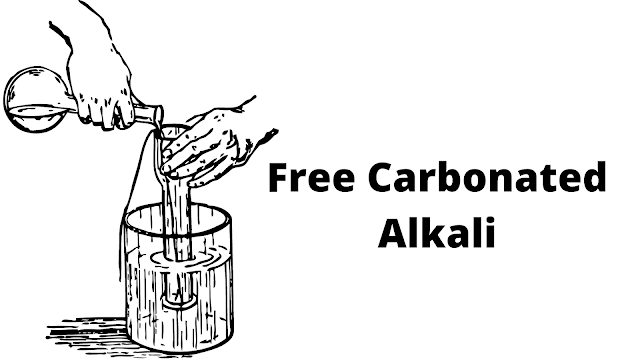Outline of the Method: (Free Carbonated Alkali) The matter insoluble in alcohol in the soap is dissolved in water and filtered. The water-insoluble carbonates are estimated by absorbing carbon dioxide gas evolved by reacting with the acid and expressed as sodium carbonate.
APPARATUS
1. Volumetric Carbonate Apparatus
2. Glass Beads
REAGENTS
1. Hydrochloric Acid-0.5N, accurately Standardized
2. Dilute Hydrochloric Acid-1:2(v/v)
3. Alkaline Absorbent solution: Mix equal volumes of 1.0 N sodium hydroxide (Carbonate-free) solution and 0.1 N barium chloride solution. Allow settling overnight, filter & preserve in well-stoppered bottles.
4. Magnesium Chloride Solution 20 percent (m/m)
5. Phenolphthalein Indicator - Dissolve 1g in 100ml of 95
percent rectified spirit.
6. Methyl orange indicator: Dissolve 0.1 g in 100 ml of
water.
7. Trichloro benzene: 1:2:4 isomer, Boiling point 213 Deg. C
and Relative Density 1.47.
Free alkali Procedure
Weigh accurately 2 to 10g of the sample and digest with 200 ml of freshly boiled ethyl alcohol in a convened vessel on a steam bath until the soap is dissolved.
Filter into a filtering flask through a counterpoised filter paper neutral to phenolphthalein, or through a weighted Gooch or sintered crucible with suction, protecting the solution from carbon dioxide and other acid fumes during the operation by covering it with a watch glass.
Wash it several times with hot ethyl alcohol to remove all the alcohol soluble. After filtering and washing the residue thoroughly with hot ethyl alcohol, change the receiver, and extract the residue with successive portions of water at about 60 Deg. C and wash the residue thoroughly on the filter paper or in the crucible.
Weigh a sufficient quantity of the sample into the sample flask to yield about 0.2g of carbon dioxide. Add about 400ml of un-boiled water to which have been added 2 ml of an alkaline absorbent solution to prevent the loss of carbon dioxide. Heat the flask in a steam bath until the soap is dissolved and cool until the flask is only slightly warm to the hand.
Add 30 ml of
Magnesium chloride solution and a few glass beads to prevent bumping. Start the
water through the condenser. Apply suction to the side tube to evacuate the
system and reduce the pressure to 65 to 85 mm as indicated by the manometer.
CAUTION: Maintain a properly reduced pressure and do not
allow air to enter the system at any time during the test. Add dilute
Hydrochloric acid containing a few drops of methyl orange indicator through the
dropping funnel until the mixture in the flask is acidic (See Note). Avoid a
large excess of acid. Add trichlorobenzene through the dropping funnel in the
proportion of about 1ml to every 2g of the sample.
NOTE: Shake the conical flask at frequent intervals from the
time the acid is added until the sample flask and
The condenser has been filled with water.
Place the small flame of a burner immediately in contact
with the bottom of the sample glass and heat continuously for 30 minutes. after
this, discontinue heating and pour boiled and cooled (carbon dioxide-free) water
at 50oC through the
condenser tube to fill the flask and the condenser to just below the side of
the arm of the condenser.
Disconnect the conical flask, add one milliliter of phenolphthalein indicator, and titrate with 0.5N hydrochloric acid with vigorous agitation until the pink color disappears. Add the acid drop by drop. If it is not possible to titrate immediately, stop the flask tightly to guard the entrance of air.
Conduct a blank determination in order to establish the
equivalent of the alkaline absorbent solution in terms of 0.5N Hydrochloric
acid and also to correct for any carbon dioxide in the reagents.
Calculation of free Alkali
FREE CARBONATED ALKALI, as SODIUM (B - S) x N x 5.3
CARBONATE, PERCENT BY MASS = ---------------------------M
Where
B=Volume in ml of standard hydrochloric acid used for the
blank
S=Volume in ml of standard hydrochloric acid used for the
sample.
N=Normality of standard hydrochloric acid used, and
M=Mass in g of the sample taken for the test.
>Determination of chloride, sulfate, and nitrate in drinking water
>Determination of acid value | Acid Value in wax

